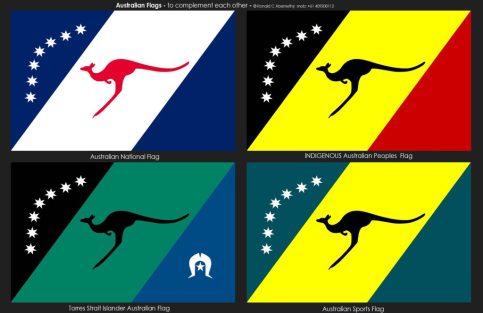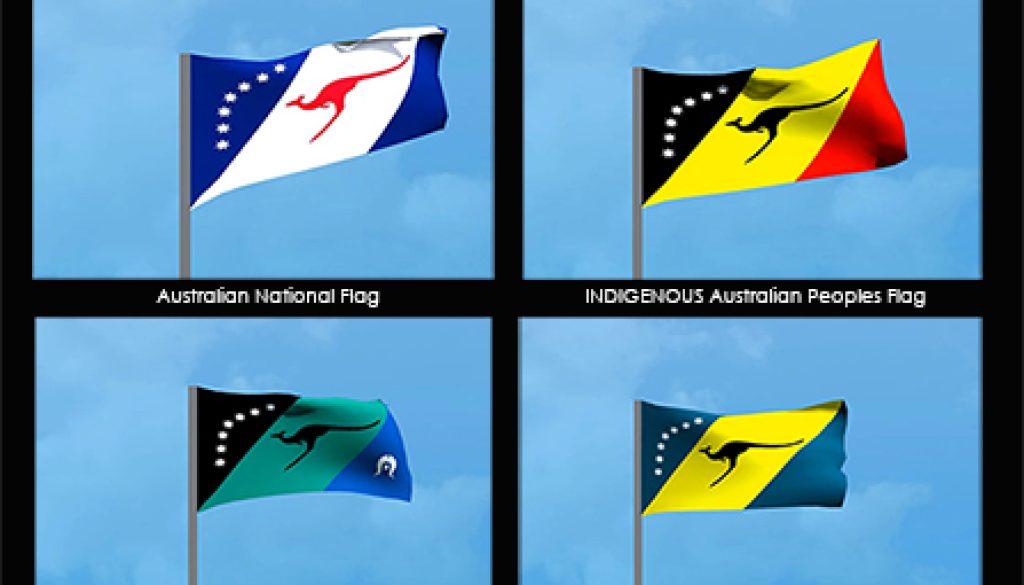
New Proposed Australian Flags One Design for 4 New Australian Flags that Unite Australians
Click here to go to
The New Proposed Australian Flags
website
The Case for a New Australian Flag
Introduction
Australia, known for its independence, diversity, and unique identity, is contemplating a change in its national flags. The current design, rooted in colonial history, may not fully capture the essence of modern Australia. The proposed flags featuring the iconic kangaroo, seven stars, and a boomerang-shaped constellation makes a strong case for a symbol that better represents our contemporary identity and values.
The Kangaroo: A National Icon
The kangaroo, deeply connected to Australia’s landscape and culture, symbolizes our wildlife, resilience, and distinctive character. As a global symbol, the kangaroo authentically embodies Australia’s spirit and uniqueness, making it a powerful addition to our national flag.
Strengthening National Unity
A flag should bring us together, fostering pride and a sense of belonging. The proposed design, including the kangaroo and a boomerang-shaped constellation of seven stars, symbolizes the unity and diversity of Australia. This inclusive representation promotes a shared sense of pride across diverse communities.
Reflecting Contemporary Significance
Symbols on a flag should reflect the current significance of a nation. The kangaroo, featured in our Defence Force insignias, national sports teams, and on Qantas planes, symbolizes bravery, strength, and national defense. This global recognition enhances Australia’s visibility and cultural influence worldwide.
Acknowledging Indigenous Culture
Incorporating the kangaroo acknowledges Australia’s Indigenous heritage, fostering respect for the oldest surviving human culture and continent on Earth. The boomerang-shaped constellation pays homage to the enduring presence of Indigenous Australians, promoting greater understanding and celebration of their rich cultural contributions.
One Design for Four Flags
Having four official flags in Australia, each sharing the unique design with the kangaroo and boomerang-shaped stars, fosters unity and inclusivity. While distinct in their colours with their current meanings, the shared design creates a cohesive visual identity, symbolising a diverse nation that embraces the national flag with its historic links, fosters unity and inclusivity, Indigenous heritage, Torres Strait Islander culture, and sportsmanship. This unified design ensures that any flag flown worldwide unmistakably represents Australia and the diverse facets of its identity.
Comparison with Canada
Canada’s adoption of the maple leaf flag in 1965 is an inspiring example of embracing a symbol that reflects a unique identity. Australia, sharing historical similarities with Canada, can learn from this experience. While both nations have ties to the British monarchy, Australia’s flag has yet to undergo a significant transformation.
Conclusion
The proposed redesign of the Australian flag, featuring the kangaroo, seven stars, and a boomerang, aligns with our modern identity and values. Embracing this change honors our past, present, and future, representing our contemporary and confident spirit. By projecting a distinctive and inclusive image to the world, a new flag can foster a stronger sense of national pride and unity among its people. It’s time for Australia to embark on a journey of visual representation that resonates with the nation’s dynamic character.
